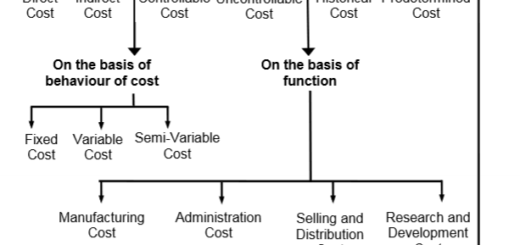FYBCOM SEM 1 Chapter 1 Variables – Basic Tools in Economics | Mumbai University
FYBCOM SEM 1 Chapter 1 Variables (Notes)

Objective Questions
A. Select the most appropriate alternative and rewrite the statement:
- What is a variable in economics?
(a) A constant value that does not change.
(b) A factor that can vary and affect economic outcomes.
(c) A mathematical equation used to calculate prices.
(d) A government policy that influences economic decisions.
- Which of the following is an example of a continuous variable?
(a) Height of individuals
(b) Number of students in a classroom
(c) Number of cars produced in a factory
(d) Number of apples in a basket - Why are variables important in economic analysis?
(a) They allow economists to predict future market trends.
(b) They help measure and explain economic relationships.
(c) They determine government policies.
(d) They ensure equal distribution of resources. - Which type of variable represents a specific point in time?
(a) Flow variable
(b) Continuous variable
(c) Stock variable
(d) Discrete variable - The total population of a country is an example of which type of variable?
(a) Flow variable
(b) Continuous variable
(c) Discrete variable
(d) Stock variable - Which of the following is a discrete variable?
(a) Temperature in degrees Celsius
(b) Number of cars sold in a month
(c) Height of a mountain
(d) Weight of an elephant - Why do economists use variables in economic models?
(a) To create complex equations
(b) To confuse policymakers
(c) increase government spending
(d) To simplify economic analysis - Which of the following is an example of an independent variable?
(a) Unemployment rate
(b) Income level
(c) Price of a product
(d) Consumer preferences - Why is understanding the relationship between dependent and independent variables crucial in economics?
(a) It guides policy decisions
(b) It helps predict stock market trends.
(c) It determines tax rates.
(d) It ensures equal distribution of wealth. - Which one of the following is not a qualitative variable?
(a) Binary variable
(b) Nominal variable
(c) Omitted variable
(d) Ordinal variable
B. State whether the following statements are true or false.
- A constant is something whose value can change, while a variable is something whose value remains the same. (False)
- The speed at which a car is travelling is an example of a variable. (True)
- The number of minutes in an hour is an example of a constant. (True)
- Economic theories and models rely only on constants to predict and explain economic outcomes. (False)
- Variables can be continuous (like height) or discrete (like the number of cars sold). (True)
- Understanding the relationship between dependent and independent constants is crucial for guiding policy decisions. (False)
- Variables allow economists to measure and explain economic relationships. (True)
- Real variables describe the monetary value of variables and tell us how rupee values and the cost of living are changing. (False)
- An exogenous variable is also known as an induced variable. (False)
- Inverse relationships occur when variables move in the same direction. (False)
(that is, they increase or decrease together).
Review Questions
1) What are variables? describe various types of variables.
Answer:
A variable is an item or magnitude of interest that can be defined and measured. It takes on different values at different times or places. A variable is a quantity that can take on more than one value, examples include the number of years of education a person has, the price of a kilo of wheat, or a household’s income.
There are various types of variables. The choice/use of variable/s is determined by the type of observation or investigation being undertaken, Economic variables may be classified in terms of the following:
i) Quantitative and Qualitative Variables:
Quantitative variables are numeric in nature and represent measurable quantities. They involve numbers, counts, or percentages when variables can be reported numerically, it is called a quantitative variable.
Examples of quantitative variables are the balance in a savings account, the number of gigabytes of data used on the cell phone plan last month, etc. Quantitative variables are either discrete or continuous.
Qualitative (Categorical) variables represent qualitative data, such as opinions, preferences, or characteristics. They do not represent quantitative data, such as measurements or counts. When an object or individual is observed and recorded as a non-numeric characteristic, it is a qualitative variable or an attribute.
Examples of qualitative variables are gender, beverage preference, type of vehicle owned, state of birth, and eye colour.
ii) Real and Nominal Variables:
Real variables describe the physical state of the economy and tell us what is really happening to economic well-being. The real variables include real GDP, employment and unemployment, the real wage rate, consumption, saving, and investment.
Nominal variables describe the monetary value of variables and tell us how rupee values and the cost of living are changing. Nominal variables include the price level (Wholesale Price Index, Consumer Price Index, and GDP deflator), the inflation rate, nominal GDP, and the nominal wage rate.
iii) Dependent and Independent Variables:
Economic behaviour may be presented as a relationship between dependent and independent variables. The behaviour being explained is the dependent variable; the economic events explaining that behaviour are the independent variables.
For example, in the income-consumption example, income generally is the independent variable and consumption is the dependent variable.
iv) Endogenous and Exogenous Variables:
An endogenous variable also known as an induced variable, is a variable in a model that is changed or determined by its relationship with other variables within the model. For instance, changes in consumption are induced by changes in income. In other words, an endogenous variable is synonymous with a dependent variable, therefore, its values may be determined by other variables.
Exogenous variables are also called external variables. They are independent variables or outside forces. However, exogenous variables can have an impact on endogenous factors.
v) Leading Indicator Variables and Lagging Indicator Variables:
Leading indicators are variables that change before real GDP changes. Leading indicators are a set of statistics about economic activities that help in macroeconomic forecasts of the economy and emerging stages of business cycles across the industry.
Lagging indicators are variables that change after real GDP changes. A lagging indicator is an observable or measurable factor that changes sometime after the economic, financial, or business variable with which it is related changes. Lagging indicators confirm trends and changes in trends.
vi) Flow Variables and Stock Variables
A flow variable is a measurable quantity that varies over a period of time. Flow variables can be measured in terms of hours, days weeks, months, or years. Inputs that are purchased or used up during a particular time period are flows. Examples of flow variables include Income, Investment, and National income.
A stock variable in economics represents a quantifiable measure of an item or commodity at a specific point in time. It offers a snapshot of a particular aspect of an economy or a company’s financial position. Examples include the total amount of money in circulation or the national debt on a particular date.
vii) Omitted Variables:
An omitted variable is an unobserved variable that, through its influence on other variables, creates the erroneous appearance of a direct causal relationship among those other variables. For example, in Iceland, a greater amount of snowfall during a given week will typically cause people to buy more snow shovels.
2) Discuss the meaning and importance of variables.
Answer:
A variable is an item or magnitude of interest that can be defined and measured. It takes on different values at different times or places. A variable is a quantity that can take on more than one value, examples include the number of years of education a person has, the price of a kilo of wheat, or a household’s income.
i) Understanding Economic Trends:
Variables help us comprehend economic growth, price fluctuations, and inflation. Variables help us track economic trends. They provide insights into factors driving economic changes, such as technological – advancements, consumer behaviour, and government policies.
ii) Policy Formulation:
Policymakers rely on variables to design effective economic policies. By analysing variables like GDP, inflation rates, and unemployment, governments can tailor policies to stabilise the economy, promote growth, and address societal needs.
iii) Prediction / Forecasting and Planning:
Variables allow economists to make informed predictions. For instance studying interest rates, exchange rates, and investment levels helps anticipate future economic conditions, and understanding variables helps predict economic trends and plan for the future.
iv) Quantitative Analysis:
Variables enable quantitative analysis of relationships: For example, studying how variables move together; e.g., GDP and investment (positive correlation), or in Opposite directions, e.g., crude oil prices and airline stock prices (negative correlation). Predicting one variable based on others (e.g., predicting inflation using money supply), is an example of regression analysis.
v) Comparative Analysis:
Variables allow comparisons across countries, regions, or time periods.
vi) Understanding and Tracking Trends:
Variables help us track economic trends. For instance, Gross Domestic Product (GDP) reflects overall economic performance; the inflation rate indicates changes in price levels, and the unemployment rate
highlights labour market conditions.
vii) Business Decisions:
Firms consider variables for decision-making. For example, studying demand helps in understanding consumer preferences and behaviour. Studying costs helps to analyse production costs and pricing strategies.
viii) Investment Strategies:
Investors use variables such as stock prices to make informed choices. Various economic factors influence stock prices themselves.
ix) Interest Rates:
Impact bond yields and investment decisions.
3) Discuss the meaning and uses of variables.
Answer:
Variables provide critical insights for policymakers, businesses, and & individuals to make informed decisions. Economic variables thus play a crucial role in understanding and analysing the economy. Here are some practical uses of economic variables:
i) Gross Domestic Product (GDP):
GDP measures the total value of all goods and services produced within a country’s borders. Policymakers use GDP to assess economic growth, compare living standards across countries, and allocate resources
ii) Inflation Rate:
Inflation reflects the general increase in prices over time. Central banks monitor inflation to set interest rates and maintain price stability. High inflation erodes purchasing power, affecting consumers and businesses.
iii) Unemployment Rate:
The unemployment rate indicates labour market conditions. Governments use it to design employment policies and assess economic health. High unemployment may signal economic distress.
iv) Interest Rates:
Central banks adjust interest rates to influence borrowing, spending, and investment. When central banks lower rates, it encourages borrowing and stimulates economic activity. Conversely, higher rates curb inflation but may slow
v) Population:
Population size affects resource allocation, demand, and economic growth. a growing population signals an Increased demand for housing, healthcare, and education.
vi) Poverty Rate:
The poverty rate measures the proportion of people living below the poverty line. Governments use it to formulate and implement social welfare programmes and reduce poverty through targeted interventions.
vii) Monetary Policy:
Central banks use interest rates and money supply variables to manage inflation and economic growth.
viii) Fiscal Policy:
Governments adjust tax rates and public expenditure based on economic variables.
ix) Business Decisions:
Firms analyse variables like consumer demand, production costs, and market conditions.
x) Investment Strategies:
Investors consider variables such as stock prices, bond yields, and exchange rates.
xi) Imports:
A country’s imports are related to its income level, foreign exchange rate, domestic prices relative to foreign countries, import tariffs, and restrictions on imported goods.
xii) Exports:
Exports are influenced by the same variables as imports, except that the income levels of foreign countries rather than that of the home country affect the amount exported. Since these variables change with time, it is reasonable to expect a country’s net export balance to change over time.
4) Explain the relationship between variables.
Answer:
Relationships between variables are represented mathematically by equations. Graphs are a visual representation of the relationship between variables. Graphs can be upward-sloping as in the case of positive relationships or downward-sloping as in the case of inverse relationships.
i) Causal relationship:
A causal relationship exists between two variables when the value taken by one variable directly influences or determines the value taken by the other variable. In a causal relationship, the determining variable is called the
independent variable; the variable it defines is called the dependent variable. Two variables are unrelated when the dependent variable is constant regardless of the value of the independent variable.
ii) Linear relationship:
When variables can have a linear relationship a graph that illustrates the relationship between the variables is a straight line.
iii) Nonlinear relationship:
In the case of nonlinear relationships between two variables, the curve graph is not a straight line. The graph is a curved line.
iv) Direct or positive relationships:
Direct relationships occur when variables move in the same direction (that is, they increase or decrease together). A relationship in which two variables move in the same direction is also called a positive relationship.
An example of a direct relationship is the one between income and consumption. Consumption and income change in the same direction.
v) Inverse or negative relationship:
Inverse relationships occur when the variables move/change in opposite directions (that is, one goes up, the other goes down). For example, product price and quantity demanded; when the product price increases the quantity demanded decreases.
Basic Tools in Economics FYBCOM Sem 1 Notes
Module – I: Introduction to Basic Tools
Chapter 1: Variables
Chapter 2: Ceteris Paribus
Chapter 3: Function
Chapter 4: Equations
Chapter 5: Identities
Module – II: Graphs and Tables
Chapter 6: Graphs and Diagrams
Chapter 7: Lines and Curves
Chapter 8: Slope
Chapter 9: Tables and Schedules



1 Response
[…] – I: Introduction to Basic ToolsChapter 1: VariablesChapter 2: Ceteris ParibusChapter 3: FunctionChapter 4: EquationsChapter 5: […]